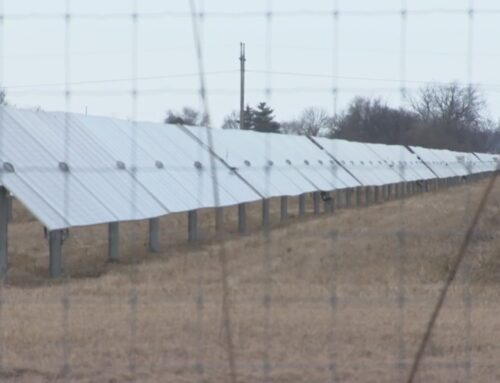Opinion: The things that went unspoken at the Alaska sustainable energy conference
June 7, 2025
At the conclusion of the 2025 Alaska Sustainable Energy Conference, much attention was given to the profitability of fossil fuels, while far less was said about the meaning of “sustainability” itself. In fact, both Alaskans and the principles of sustainability were notably absent from the conference’s central themes and many of its attendees. From the outset, the federal government’s priority appeared to be reassuring foreign interests of the United States’ continued ability to sell off Alaska piece by piece.
Conference organizers, led by Gov. Mike Dunleavy, were eager as regulatory protections continue to be rolled back in the United States. Federal officials, including Interior Secretary Doug Burgum, Energy Secretary Chris Wright and EPA Administrator Lee Zeldin, expressed strong support for further weakening of environmental safeguards to unilaterally advance long-contested development projects across Alaska.
Many attendees represented corporate interests, excited about new extraction opportunities or potential buyers watching to see if the administration follows through on promises to mine Alaska’s oil, gas and critical minerals. These companies appeared to be enthusiastic about exploiting the land with minimal oversight and without local consent. The audience was left with a misleading impression of Alaska support, captured by Brendan Duval, CEO and Founder of Glenfarne: “The many expressions of interest received reinforce that the market recognizes Alaska LNG’s advantaged economics, fully permitted status, and powerful federal, state, and local support.”
At the center of ongoing and proposed projects, such as Red Dog Mine, GraphiteOne and the Ambler Road was the largest item for sale: a natural gas reservoir on the North Slope.
The proposed Liquefied Natural Gas (LNG) pipeline, currently led by the Alaska Gasoline Development Corp. and New York-based Glenfarne Group LLC, would extract natural gas from subsurface carbon and transport it 800 miles south to Nikiski for export. The $44 billion project promises only temporary jobs and infrastructure.
Environmentally, natural gas poses risks similar to coal and oil. It is composed primarily of methane (CH4), a potent greenhouse gas. Inevitable gas leaks during extraction and transportation can release up to 10% of methane before combustion, with the remainder ultimately emitted as CO2. These outcomes reflect outdated, combustion-based energy models.
Regarding Alaska’s wildlife and people, cabinet members dismissed concerns after brief visits, stating “the animals are happy” and claiming that “run-down” communities would benefit from further resource development despite evidence to the contrary.
ADVERTISEMENT
The “resource curse” is a paradox that explains the economic dynamics of regions rich in natural resources but limited in democratic representation. Extraction projects often introduce new workers, housing, and other infrastructure at great cost to local communities. Despite generating profits for corporate sponsors, these projects typically result in a net loss for the public. Workers are imported from out of state, while profits are exported. Local towns are then responsible for maintaining infrastructure without receiving corresponding benefits like revenue to support housing, healthcare or affordable energy. As finite resources are exhausted, companies maintain profit margins while community returns diminish. Once operations end, communities are often left with environmental damage and abandoned development, economically and socially worse off than before .
Alaska’s economy remains heavily reliant on oil and gas. As existing operations decrease in yield, public education and healthcare routinely face budgetary cuts. The natural gas reserve would only provide exports for a few decades, but its development would cause irreparable environmental damage and leave Alaska facing another energy crisis within a generation. Why Gov. Dunleavy labeled this conference “Sustainable” remains unclear.
It is unrealistic to claim the pipeline would benefit any of the 190 communities beyond the Railbelt. While the state invests in LNG exports, rural towns reliant on diesel will face rising costs and health issues, including cancer.
Regardless of one’s stance on oil and gas, Energy Secretary Chris Wright himself stated, “Energy is about people and math”. His equation solves for profit. Alaska’s equation for energy must begin and end with the voices and needs of the people.
Scientists attending in an official capacity were restricted to framing oil and gas as the primary development priority. This narrowed the conversation and sidelined advances in technology such as solar, wind, hydroelectric and geothermal energy. Still, a handful of sustainability advocates attended as guests, business owners, protesters and speakers. One speaker, Senior Advisor for New Energy Alaska Lesil McGuire, noted, “Solar arrays can be propped up in a number of weeks”. As of 2020 solar energy became cheaper to install and maintain than fossil fuels.
Alaska needs energy infrastructure tailored to its unique environment, with a focus on long-term self-reliance through renewable sources. Current examples include solar installations in the Northwest Arctic Borough, microgrid cooperatives, and heat pump incentives in Southeast Alaska. A cursory glance shows Alaska’s capacity for renewable energy, which would be faster and more cost-effective than the LNG pipeline.
In reality, the conference didn’t need to be held in Alaska, as Alaskans themselves played a minimal role. Led by Gov. Dunleavy, the Alaska Sustainable Energy Conference 2025 resembled government-backed promotion of the oil and gas industry, signaling that extraction projects could move forward without oversight and regardless of local stakeholders’ needs or opposition. International representatives were promised fuel for import, and out-of-state corporations were invited to profit at the expense of Alaska’s environment.
Renewable energy has been viable for decades and continues to become more efficient. Given a voice and a seat at the table, many Alaskans and Americans would likely favor local, self-sufficient renewables for lower prices and long-term reliability. Natural gas in Alaska will run out in this lifetime, do nothing to reduce costs in the majority of Alaska communities and cause permanent harm to the environment. The United States and Alaska are not in need of a technological revolution in fossil fuels, but an information revolution in renewable energy. It is vitally important that all Alaskan voices are heard. Alaska values pristine wilderness, supports true sustainability, and is not for sale.
Ariel Hasse-Zamudio is executive director of the Alaskan Energy Infrastructure Project, an initiative to identify policy goals for renewable energy in Alaska. She holds a BS in physics from Caltech and is a published author with research experience in hydrogen storage and perovskites solar cell technology. Ariel is a lifelong Alaskan, currently living in Juneau.
• • •
The views expressed here are the writer’s and are not necessarily endorsed by the Anchorage Daily News, which welcomes a broad range of viewpoints. To submit a piece for consideration, email commentary(at)adn.com. Send submissions shorter than 200 words to letters@adn.com or click here to submit via any web browser. Read our full guidelines for letters and commentaries here.
Search
RECENT PRESS RELEASES
Related Post




